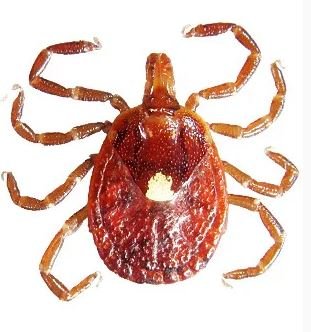A 61 y.o. male sp renal transplant in 2023 presents with fever, lactate of 5, elevated LFTs, WBC of 1.5 and platelets of 27,000.
He reports finding this on his leg
Could this be the source of his problem?
Our patient had Ehrlichiosis. This is a disease spread by ticks causing a flu-like illness in most people. It is known for causing leukopenia, thrombocytopenia and elevated transaminases. It can cause sepsis and shock with end-organ disease in immunosuppressed patients; as in our patient.
Ehrlichia is an intracellular gram negative bacteria in the family Rickettsiae. While the organism had been known since 1889, it was not associated with disease in animals until 1937 . The first report in humans was a patient who had gotten a tick bite in Arkansas in 1986. In the US, the states with the most cases are Missouri, Arkansas and Oklahoma. Deer are the reservoir hosts for Ehrlichia while humans and dogs are incidental hosts . Bacterial microcolonies can be seen within the WBCs in a Wright stain of peripheral blood.
While Ehrlichia is common in Missouri, other tick borne diseases are more common in other parts of the country, with Lyme disease leading the list in the US. The lone star tick bite can sometimes lead to alpha-gal syndrome, which is a meat allergy. As the tick feeds, it transfers a sugar molecule called alpha-gal into a person. This molecule triggers an immune response and subsequent exposure to meats like beef and pork which contain alpha-gal, will cause an immune response with rash, nausea and vomiting, shortness of breath and even anaphylaxis.
The sizes of ticks vary, the nymphs are the size of a grain of sand while an engorged adult can be 2/3 of an inch. An attached tick can feed for seven days. Most Lyme disease is spread by nymphs because they are small and hard to find on the skin. Larval ticks can also be infectious, having gotten pathogens from their mothers but most ticks are infected after feeding on their hosts.
Fun facts:
Ehrlich was a German immunologist who is actually most famous for discovering that arsenic can cure syphilis.
Ticks are common when the weather is consistently at 40 degrees.
Our patient developed shock and was treated in the ICU. He responded to doxycycline and was discharged. His creatinine gradually returned to normal at 1.2.
https://www.mayoclinic.org/diseases-conditions/alpha-gal-syndrome/in-depth/tick-species/art-20546861
https://web.uri.edu/tickencounter/species/lone-star-tick/
Hamilton K, Stnadaert , Kinney M. characteristicperipheral blood findings in human Ehrlichiosis. Modern Pathology 2004:(17); 512-517
ticks change color when engorged.




